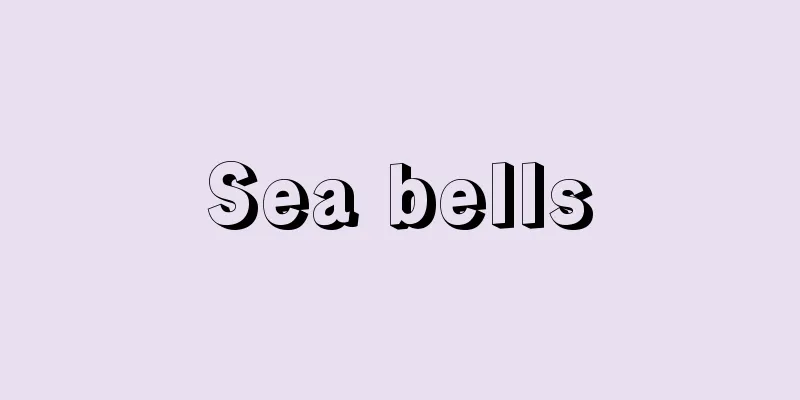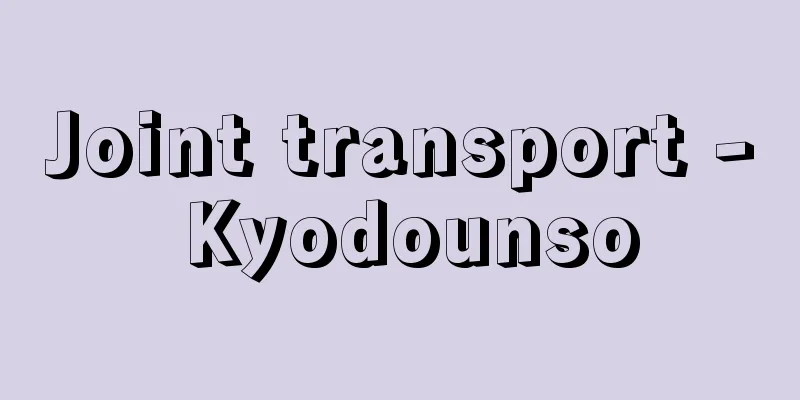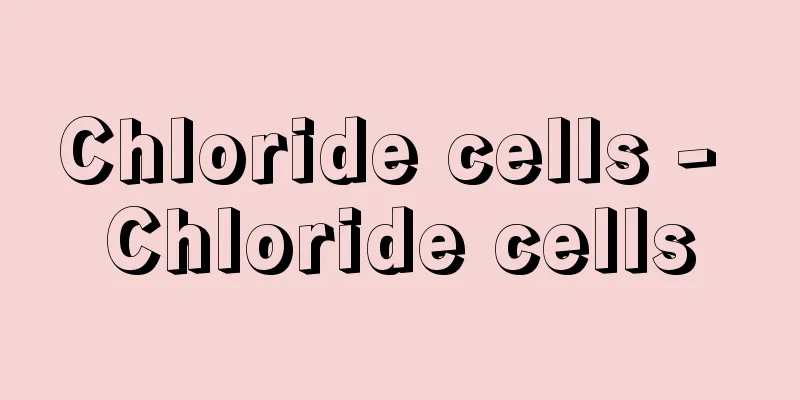Nicaragua - Nikaragua (English spelling) Nicaragua

|
Nicaragua is a republic located in the center of the Central American Isthmus (an extremely narrow area of land connecting North and South America). Its official name is the Republic of Nicaragua. It borders Honduras in the north by the Coco River, Costa Rica in the south by Lake Nicaragua and the San Juan River, the Caribbean Sea in the east, and the Pacific Ocean in the west. The Caribbean Sea is home to the Mais and Miskito islands, which are made up of hundreds of small islands. The country's name comes from the indigenous people, Nicaragua. It has a population of 5.53 million (2006 estimate) and 5.89 million (2011 estimate) living in an area of 130,000 square kilometers, roughly equivalent to the combined area of Hokkaido and Kyushu in Japan. The capital is Managua, and the metropolitan area has a population of 1.35 million (2009 estimate). [Kunimoto Iyo] NatureThe country is sandwiched between the Caribbean Sea and the Pacific Ocean, and is roughly divided into two halves by the Central American Mountain Range, which runs from northwest to southeast, and the highlands in the northwest, which are 1,200 to 1,500 meters above sea level. The Miskito coastal area along the Caribbean Sea has a hot, humid, tropical, rainy climate with no dry season, and the entire eastern region, including the highlands behind it, is influenced by the trade winds blowing in from the Caribbean Sea, with an annual rainfall of 2,500 to 6,000 mm, making it the region with the highest rainfall in the Central American isthmus. The Nicaraguan lowlands, which stretch from the southwest to the south, have a savanna climate, and are not only an important geographical crossroads of the Central American isthmus, but also the center of all activity in Nicaragua. The San Juan River, which forms the border with Costa Rica and flows into the Caribbean Sea, and Lake Nicaragua (8,029 square kilometers), which is 13 times larger than Lake Biwa, played a key role in international traffic connecting the Caribbean Sea and the Pacific Ocean from the late 19th century to the early 20th century before the construction of the Panama Canal. There were several plans to build a canal using the Nicaraguan lowlands. This region is a fertile agricultural area covered with volcanic ash, and major cities such as Managua, Masaya, Leon, and Granada are located here, with 80% of the total population concentrated there. The western part of the country is located on the Pacific Ring of Fire, with many volcanoes and frequent earthquakes. In 1905, the Momotombo Volcano (1,258 meters) erupted, causing extensive damage. The capital, Managua, was hit by major earthquakes in 1931 and 1972, and was temporarily destroyed. They are also subject to damage from hurricanes. [Kunimoto Iyo] historyColumbus arrived in Nicaragua on his fourth voyage in 1502, and in 1523 a group of Spanish expeditioners led by Andrés Nyuño explored the country. The following year, in 1524, Granada and Leon were founded by immigrants from Panama, and full-scale colonization by the Spanish began. In 1644, Nicaragua was annexed to the Viceroyalty of Guatemala, with Leon becoming the administrative center. The foundation of the colonial economy was the cultivation of indigo, cacao, and sugar cane. Nicaragua gained independence as part of the Viceroyalty of Guatemala in 1821, but was temporarily annexed to the Mexican Empire in 1823, after which it formed the Federal Republic of Central America with the current nations of Guatemala, Honduras, Costa Rica, and El Salvador. However, the Federal Republic of Central America disintegrated due to internal conflicts. The five nations that made up the federation separated from each other, and in 1838, Nicaragua achieved complete independence along with the other four nations. The two cities of Granada and Leon, which had been in conflict since the establishment of the colony, continued to fight even at the time of independence, with pro-independence and pro-Spanish factions splitting into two factions. In the six years immediately following independence, political turmoil intensified, with 16 presidents alternating between them, and in 1846 the capital was moved from Leon to Managua, located halfway between the city and Granada. The internal conflict continued thereafter, and the conflict became international, with American William Walker, who was accepted as reinforcement by the liberal faction of Leon, becoming president in 1855. The situation became extremely chaotic due to the fact that Latin American countries feared American intervention, Britain was in conflict with the United States over economic interests, and Walker's business rival Cornelius Vanderbilt sided with the rebel forces, and President Walker was overthrown and executed in 1960 in Honduras, where he had fled. The background to America's interest in Nicaragua was that there was a route from the eastern United States to the Pacific coast via the port of San Juan del Norte on the Caribbean side, the San Juan River, and Lake Nicaragua, which was a major transportation route during the California Gold Rush. This route was developed by railroad magnate Vanderbilt. The intervention of foreign powers was typified by the British, who advanced into the Miskito region, a jungle area on the Caribbean coast during the Guatemalan Viceroyalty, and continued to rule the region until 1894, and the United States, which advanced into the mining and agricultural sectors from the late 19th century and created an economic structure dependent on the United States through monoculture (single crop cultivation). The gold mines (near the Pispis River valley, a tributary of the Coco River) were developed by American capital, and sugar produced on sugarcane plantations was exported to the United States. The United States also intervened in politics, sending Marines after an American was killed in the 1902 civil war, and in 1912, at the request of the Nicaraguan government, sending troops to put an end to the civil war, which they stationed there until 1933. During this time, in 1914, the United States concluded the Brian Chamorro Treaty with the Nicaraguan government, which granted the right to dig the Nicaragua Canal, the right to establish a naval base at the Gulf of Fonseca, and the right to lease the Mais Islands. Nationalist A. C. Sandino, who opposed the occupation by the American military, led a guerrilla unit and challenged the American army in 1927, but was assassinated in 1934. The guerrilla struggle led by Sandino had a great impact on Latin American countries, and later became the origin of the name of the Sandinista National Liberation Front (FSLN), which launched an anti-government movement in Nicaragua from the 1960s. After Anastasio Somoza Garcia, who became head of the National Guard established when US troops withdrew, was elected president in 1936, the Somoza family, with Anastasio himself, his eldest and second sons, and his close aides all in office, continued to implement an anti-communist, pro-American foreign policy and oppress critical forces by outlawing reformist parties domestically, maintaining a long-term dictatorship for 42 years. Since the 1960s, anti-Somoza guerrilla groups have been uniting around the FSLN, and when the Carter administration came to power in the United States in 1977, anti-government activities intensified, backed by the Carter administration's human rights diplomacy. In 1978, the assassination of Chamorro, the publisher of the influential newspaper La Prensa (an anti-government organization), triggered a civil war, which led to the overthrow of the Somoza dictatorship in 1979 and the establishment of a revolutionary government (the Nicaraguan Revolution). However, since the revolutionary government initially included a wide range of forces other than the FSLN, as the new government became more left-leaning, those who opposed it formed democratic groups and began armed struggle, and coupled with the resistance of conservative forces, the situation developed into a civil war. In order to peacefully resolve this Nicaraguan conflict, the Contadora Group, consisting of Mexico, Panama, Venezuela, and Colombia, began mediating in 1983. In the first historic election after the revolution in 1984, Daniel Ortega of the FSLN, which had transformed from a guerrilla organization into a political party, was elected president, but armed conflict between the right-wing counter-revolutionary forces (the Contras), supported by the United States under the Reagan administration, and the Sandinista revolutionary government led by Ortega, continued to intensify, and the civil war continued until an election was held under international observation in 1990. The death toll during this period reached 30,000. The FSLN lost this election, and a centrist Chamorro government was established. In 1995, the government amended the constitution, shortening the presidential term from six years to five years and enacting new electoral laws, among other political reforms. The FSLN then lost the 1996 election due to internal divisions, and Arnoldo Alemán, a candidate from the Constitutional Liberal Party (PLC), was elected president. Alemán, a businessman who had been imprisoned and had his assets confiscated during the Sandinista revolutionary regime, sought to strengthen relations with the United States and worked to revive the economy. The PLC also won the 2001 presidential election, and pro-American center-right parties took power for two generations. However, in the 2006 election, the FSLN succeeded in re-electing Ortega as president, and in the election held in November 2011, Ortega was re-elected for a third term with an overwhelming majority of 63% of the votes. [Kunimoto Iyo] Politics and DiplomacyThe current constitution is the Revolutionary Constitution enacted in 1987 (partially amended in 1995). In addition to the separation of executive, judicial, and legislative powers, the fourth power, the right to manage elections, is clearly stated as an independent national right. The president's term of office is five years. He is elected along with the vice president by direct popular vote, and reelection is prohibited. However, in October 2009, the Constitutional Chamber of the Supreme Court invalidated the clause prohibiting the president from consecutive reelections, in favor of the FSLN's argument that this was "against equality under the law," which allowed President Ortega to be re-elected consecutively in 2011. The parliament is unicameral, with 92 seats and a five-year term. The right to manage elections, stipulated as the fourth power, is exercised by the Supreme Electoral Commission, which is made up of five members with a six-year term. The members are selected by the National Assembly from a list submitted by the president. In terms of diplomatic relations, during the Sandinista revolutionary government, relations with socialist countries were strengthened, and relations with the United States deteriorated drastically. However, after the establishment of the Chamorro government, the two countries signed a Treaty of Friendship and Cooperation in 1992, and relations improved. The country also placed importance on relations with other Central American countries, and actively participated in the movement toward political and economic integration in the region. However, the anti-American leftist FSLN Ortega government places importance on relations with Russia, Venezuela, Cuba, and Iran, and is a strong critic of the US policy toward Cuba. [Kunimoto Iyo] Economy and IndustryAs in other Central American countries, agriculture and livestock farming, which have traditionally been the backbone of the economy, still accounts for 30% of the total working population, but its share of the gross domestic product (GDP) has fallen to 12% (2010). As can be seen from the figures of 27% for industry and 60% for the tertiary industry, the industrial structure in the 21st century has changed significantly. However, in terms of the working population, agriculture, which is still important, was once bipolarized between export products produced by large landowners and self-sufficiency crops produced by small farmers. However, the Sandinista revolutionary government implemented agrarian reform, and 40% of all arable land (2.8 million hectares) was expropriated by the state. Of this, 70% was owned by the Somoza family. In addition to land reform, the revolutionary government nationalized major industries and banks, implemented state control of trade, expanded the state-controlled sector of the economy, and created a mixed economy. However, the civil war, in addition to the flight of businessmen and capital overseas, has impoverished the domestic economy, forcing the vast majority of the population into extreme poverty, to the level of one of the poorest countries in the world. Under the Chamorro administration, economic recovery was aimed for, stabilizing the domestic economy and transitioning to a market economy. Although the gross national income per capita has recovered from $400 in 2000 to $3,443 in 2010, it is still one of the poorest countries in Latin America. The currency is the Cordoba (NIO). Resort development is taking place in the southwestern part of the Pacific coast. [Kunimoto Iyo] Society and CultureThe majority of the population is of mixed descent, including Spanish, indigenous and African people. Six indigenous groups, including the Miskito, Sumo and Rama, who lived in the Coco River basin and the Mosquitos Coast area, formed anti-government guerilla groups during the civil war, and in 1985, after the civil war, they were awarded the vast Autonomous Region of North Atlantic and Autonomous Region of South Atlantic in the peace agreement concluded with the Sandinista government. These two autonomous regions were established by dividing the formerly single department of Celaya. The main religion is Catholicism, and the official language is Spanish. However, the constitution guarantees the right of indigenous people to receive education in their mother tongue, and Miskito and Creole English (English mixed with African languages) are also recognized as official languages on the Miskito Coast on the Atlantic coast. Primary school (7-12 years old) and junior high school (13-17 years old) are free and compulsory. After the revolution, Cuba dispatched teachers to make up for the shortage of teachers and launched a literacy campaign, which led to the literacy rate of the population over 15 years old exceeding 80% in 2010. Rubén Darío, the poet considered to be the greatest in Latin America, is a native of this country. [Kunimoto Iyo] Relations with JapanDiplomatic relations were established in 1935 (Showa 10). Diplomatic relations were severed during World War II, but were resumed with the signing of a peace treaty in 1952 (Showa 27). Embassies are located between the two countries. Japan is one of the main donor countries providing manpower and funds for Nicaragua's reconstruction after the civil war, but trade relations between the two countries are small. [Kunimoto Iyo] "The Structure of the Central American and Caribbean Crisis" by Hosono Akio, Osonoi Shigeo, and Tanaka Takashi (1987, Yuhikaku Publishing) "Central America in Transition" by Kamo Yuzo, Hosono Akio, and Harada Kinichiro (1990, Omura Shoten) "Post-Cold War Central America: From Conflict to Peace" edited by Ishii Akira (1996, Institute of Developing Economies) [References] | [Additional Materials] |"> Nicaragua flag ©Shogakukan Illustration/Shogakukan Creative "> Nicaragua Location Map Source: Shogakukan Encyclopedia Nipponica About Encyclopedia Nipponica Information | Legend |
|
中米地峡(南北アメリカ大陸をつなぐ陸地が極端に狭くなった地域)の中部に位置する共和国。正式名称はニカラグア共和国República de Nicaragua。北はココ川でホンジュラスと、南はニカラグア湖とサン・フアン川でコスタリカと国境を接し、東はカリブ海、西は太平洋に面する。カリブ海には数百の小島からなるマイス諸島やミスキト諸島がある。国名は先住民のニカラオに由来する。日本の北海道と九州を合わせた面積にほぼ等しい13万平方キロメートルに人口553万(2006年推計)、589万(2011年推計)が暮らす。首都はマナグアで、首都圏人口は135万(2009年推計)である。 [国本伊代] 自然カリブ海と太平洋に挟まれた国土は、北西から南東に縦走する中米山脈と北西部の海抜1200~1500メートルの高地によって、カリブ海側と太平洋側に大きく二分されている。カリブ海に沿って広がるミスキト海岸地帯は乾期のない高温多湿の熱帯多雨性気候で、その背後に迫る高地を含めた東部全域がカリブ海から吹いてくる貿易風の影響を受けて年間雨量2500~6000ミリメートルに達し、中央アメリカ地峡でもっとも雨量の多い地域である。南西部から南部に広がるニカラグア低地はサバンナ気候で、中米地峡の重要な地理的分岐点となっているだけでなく、ニカラグアのあらゆる活動の中心部でもある。コスタリカとの国境線となってカリブ海に注ぐサン・フアン川と琵琶湖(びわこ)の13倍の広さがあるニカラグア湖(8029平方キロメートル)は、パナマ運河建設以前の19世紀後半から20世紀初期にはカリブ海と太平洋を結ぶ国際交通の要所の役割を果たした。その後も何度かニカラグア低地を利用する運河建設が構想された。この地域は火山灰に覆われた肥沃(ひよく)な農業地帯を形成しており、マナグア、マサヤ、レオン、グラナダなどの主要都市が位置し、全人口の8割が集中している。国土の西部は環太平洋地震帯に位置し、火山が多く、地震も多発する。1905年にはモモトンボ火山(1258メートル)が噴火して甚大な被害をもたらした。首都マナグアは1931年と1972年に大地震にみまわれ、一時は壊滅状態となった。また、ハリケーンの襲来による被害も受ける。 [国本伊代] 歴史1502年、コロンブスが第四次航海で到達し、1523年にアンドレス・ニューニョを隊長とするスペイン人グループがニカラグアの地を踏査した。翌1524年にパナマからの移住者によりグラナダとレオンが建設され、スペイン人による本格的な植民地化が開始された。1644年にグアテマラ総督領に併合され、レオンが行政の中心地となった。植民地経済の基盤を支えたのは、アイ(藍)、カカオ、サトウキビの栽培であった。1821年のグアテマラ総督領の独立に伴い、その一部として独立したが、1823年に一時メキシコ帝国に併合されたのち、現在のグアテマラ、ホンジュラス、コスタリカ、エルサルバドルとともに中米連邦共和国を結成した。しかし、中米連邦共和国は内紛のために解体した。連邦を構成した5か国はそれぞれ分離し、1838年にニカラグアは他の4か国と同様に完全独立を達成した。 植民地建設以来対立関係にあったグラナダとレオンの両都市は、独立に際しても独立派とスペイン派とに分かれて抗争を続け、独立直後の6年間に16人の大統領を交互に出すなど政治的混乱の度を強め、1846年に首都がレオンから同市とグラナダとの中間に位置するマナグアへ移された。その後も内紛は続き、レオンのリベラル派が援軍として受け入れたアメリカ人ウィリアム・ウォーカーが1855年に大統領となるなど、紛争は国際化した。アメリカの介入を危惧(きぐ)する中南米諸国、アメリカと経済的利権をめぐって対立するイギリス、ウォーカーの商敵コーネリアス・バンダービルトの反政府勢力への肩入れなどにより状況は混乱をきわめ、大統領ウォーカーは打倒されて1960年に遁走(とんそう)先のホンジュラスで処刑された。なおアメリカのニカラグアへの関心の背景には、当時アメリカ東部からカリブ海側のサン・フアンデル・ノルテ港―サン・フアン川―ニカラグア湖を経て太平洋岸に達するルートがあり、カリフォルニアのゴールド・ラッシュ時代の主要な交通路であったためである。このルートを開発したのが鉄道王バンダービルトであった。外国勢力の介入は、グアテマラ総督領時代にカリブ海沿岸の密林地帯ミスキト地方に進出して1894年までこの地域を支配し続けたイギリスと19世紀後半から鉱業と農業部門に進出してモノカルチュア(単一作物栽培)による対米従属の経済構造をつくりあげたアメリカに代表される。金鉱山(ココ川支流のピスピス川河谷付近)はアメリカ資本によって開発され、サトウキビ・プランテーション生産する砂糖はアメリカに輸出された。アメリカは政治にも介入し、1902年の内乱でアメリカ人が殺害されたことを契機に海兵隊を派遣し、さらに1912年にはニカラグア政府の要請に基づき内乱収拾のために軍隊を派遣して1933年まで駐留させた。この間の1914年にアメリカは、ニカラグア運河開削権、フォンセカ湾海軍基地設置権、マイス諸島租借権を認めさせたブライアン・チャモロ条約をニカラグア政府と締結した。このアメリカ軍隊の占領に反対した民族主義者A・C・サンディーノが1927年にゲリラ部隊を率いてアメリカ軍に戦いを挑んだが、1934年暗殺された。このサンディーノが率いたゲリラ闘争は中南米諸国に多くの影響を与え、のち1960年代からニカラグアで反政府運動を展開したサンディニスタ民族解放戦線(FSLN)の命名の由来となった。アメリカ軍の撤退にあたり創設された国家警備隊の長官となったアナスタシオ・ソモサ・ガルシアが1936年に大統領に選出されて以後、ソモサ一族はアナスタシオ自身、長男、次男および側近の大統領就任によって、反共、親米協調の外交政策と国内における革新政党の非合法化による批判勢力の弾圧を続け、42年間に及ぶ長期独裁体制を保持した。 1960年代以降、反ソモサ勢力のゲリラ諸集団がFSLNを中心に結集し、1977年にアメリカでカーター政権が誕生すると、その人権外交に後押しされて反政府活動が活発となり、1978年に有力紙『ラ・プレンサ』(反政府系)の社主チャモロの暗殺を引き金に内乱に発展して、1979年ソモサ独裁政権が倒され、革命政権が樹立された(ニカラグア革命)。しかし革命政権は当初FSLN以外の幅広い諸勢力を含んでいたため、新政権の左傾化に伴ってそれに反発する勢力が民主グループを結成して武力闘争を開始し、保守勢力の抵抗とも相まって、事態は内戦状態へと発展した。このニカラグア紛争の平和的解決を目ざして1983年からメキシコ、パナマ、ベネズエラ、コロンビアで構成されたコンタドーラ・グループが調停工作を行った。1984年に行われた革命後最初の歴史的な選挙でゲリラ組織から政党へと転身したFSLNのダニエル・オルテガが大統領に選出されたが、レーガン政権下のアメリカの支援を受けた右派反革命勢力(コントラ)とオルテガの率いるサンディニスタ革命政権との間の武力闘争は激化の一途をたどり、内戦状態は1990年に国際監視団の下で実施された選挙時まで続いた。この間の死者は3万人にのぼった。 この選挙でFSLNは敗れ、中道のチャモロ政権が成立した。同政権は1995年に憲法を改正し、大統領の任期を6年から5年へと短縮し、新しい選挙法を制定するなどの政治改革を行った。その後FSLNは内部の分裂から1996年の選挙でも敗北し、立憲自由党(PLC)から立候補したアルノルド・アレマンが大統領に当選した。サンディニスタ革命政権時代に投獄され、財産を没収された経験のある実業家アレマンは対米関係の強化を図り、経済の復興に取り組んだ。2001年の大統領選挙でもPLCが勝利し二代にわたって親米の中道右派が政権を担当した。しかし2006年の選挙でFSLNはオルテガの大統領再選に成功し、さらに2011年11月に実施された選挙でオルテガは得票率63%という圧倒的な強さで連続再選(3選)された。 [国本伊代] 政治・外交1987年に制定された革命憲法が現行憲法である(1995年一部改正)。行政・司法・立法の三権分立に加えて第四権として位置づけられる選挙管理権が独立した国権として明記されている。大統領の任期は5年。国民の直接選挙によって副大統領とともに選出され、再選は禁止されている。ただし2009年10月、憲法に規定された大統領の連続再選禁止条項を最高裁憲法法廷が「法の下の平等に反する」とのFSLNの主張を認めて無効としたため、2011年のオルテガ大統領の連続再選が可能となったという経緯がある。議会は一院制、92議席で任期は5年。第四の権力として規定されている選挙管理権は任期6年の5人の委員からなる最高選挙管理委員会が行使する。委員は大統領が提出する名簿から国民議会が選出する。外交関係では、サンディニスタ革命政権時代に社会主義国との関係が強化され、対米関係が極度に悪化した。しかしチャモロ政権の樹立後は1992年に両国間の友好協力条約が締結され、関係改善が進んだ。また、ほかの中米諸国との関係も重視され、この地域の政治・経済統合への動きにも積極的に参加した。しかし、反米左派のFSLNオルテガ政権はロシア、ベネズエラ、キューバ、イランとの関係を重視し、アメリカの対キューバ政策を厳しく批判している。 [国本伊代] 経済・産業ほかの中米諸国と同様に、伝統的に経済の基幹となっていた農牧畜業は、就業人口ではいまだ総労働人口の30%を占めるものの、国内総生産(GDP)に占める割合は12%にまで低下しており(2010)、工業の27%と第三次産業の60%という数字でわかるように、21世紀における産業構造は大きく変わっている。しかし就業人口からみて、いまだ重要な農業は、かつて大土地所有者による輸出産品生産と零細農による自給作物生産との二極分解的構造となっていたが、サンディニスタ革命政権によって農地改革が実施され、全耕地の4割(280万ヘクタール)が国家に収用された。このうちの70%はソモサ一族によって所有されていた土地である。農地改革に加え、革命政権は主要産業・銀行の国有化、貿易の国家管理を行い、経済の国家管理部門を拡大し、混合経済体制をつくりあげた。しかし経営者や資本の国外逃避に加えて内戦が国内経済を疲弊させ、圧倒的多数の国民の生活は極貧状態にまで追い込まれ、世界の最貧国群のレベルにまで陥った。チャモロ政権の下で経済復興が目ざされ、国内経済の安定化と市場経済への転換が図られた。しかし、1人当り国民総所得は2000年の400ドルから2010年の3443ドルまで回復しているが、いまだに中南米の最貧国の一つである。通貨はコルドバ(NIO)。太平洋岸の南西部ではリゾート開発が行われている。 [国本伊代] 社会・文化国民の多数はスペイン人と先住民およびアフリカ系住民の混血である。ココ川流域とモスキトス海岸地域に住んでいたミスキト、スモ、ラマなどの六つの先住民集団は内戦時代に反政府ゲリラ組織を結成して闘い、内戦後の1985年にサンディニスタ政権との間で締結された和平協定で広大な北アトランティコ自治地域と南アトランティコ自治地域を獲得した。これら二つの自治区は、かつて単一の県であったセラヤ県が分割されて成立したものである。主要な宗教はカトリックで、公用語はスペイン語である。ただし先住民は母語による教育を受ける権利を憲法によって保障されており、大西洋岸のミスキト海岸ではミスキト語とクレオール英語(アフリカ系言語が混在する英語)も公用語として認められている。教育は小学校(7~12歳)と中学校(13~17歳)が無償の義務教育である。革命後、不足する教師を補うためにキューバが教員を派遣して識字運動を展開したこともあり、2010年には15歳以上の人口の識字率は80%を超えた。中南米最高とされる詩人ルベン・ダリオはこの国の出身である。 [国本伊代] 日本との関係1935年(昭和10)に外交関係を樹立。第二次世界大戦で外交関係は断絶したが、1952年(昭和27)の平和条約の署名により再開。両国間に大使館が置かれている。日本はニカラグアの内戦後の復興に人材と資金を援助する主要な援助国の一つであるが、貿易関係の規模は小さい。 [国本伊代] 『細野昭雄・遅野井茂雄・田中高著『中米・カリブ危機の構図』(1987・有斐閣)』▽『加茂雄三・細野昭雄・原田金一郎著『転換期の中米地域』(1990・大村書店)』▽『石井章編『冷戦後の中米――紛争から和平へ』(1996・アジア経済研究所)』 [参照項目] | [補完資料] |"> ニカラグアの国旗 ©Shogakukan 作図/小学館クリエイティブ"> ニカラグア位置図 出典 小学館 日本大百科全書(ニッポニカ)日本大百科全書(ニッポニカ)について 情報 | 凡例 |
>>: Nicaragua [Lake] - Nicaragua
Recommend
Faguet, Émile
Born: December 17, 1847, Vendée, Roche-sur-Loyon [...
Masatora Ooae
Year of death: 11th January 1596 (9th February 159...
Upzail - Upzail
…Mountain climbing term. Also called abseiling or...
Omi [Hot Spring] - Oumi
…Most people are part-time farmers, but the numbe...
Maipo [Mountain] - Maipo
A volcano in the Andes, about 100 km southeast of ...
Main line - Main line
…The general offices (8 offices), central offices...
Takara Shrine
It is located in Mii-cho, Kurume City, Fukuoka Pr...
Tale of the Yakushi Wake - Tale of the Yakushi
A kana zoshi (traditional Japanese story). Author ...
Cuvier pipe - Cuvier pipe
⇒ Cuvier organ Source: About Shogakukan Digital Da...
Hosomi - Saiken
〘 noun 〙① (━suru) To look closely. ※Koyuki - Janua...
Lee Tae-jun
Korean novelist. Born in Gangwon Province. He beg...
Kayazu Inn
…Under the ancient Ritsuryo system, there was a K...
Coastal sand dunes
These are masses of sand distributed along the co...
Sutomo (English spelling)
Born: 1888 [Died] 1938 An Indonesian doctor and on...
We Insist (English spelling)
...After losing Brown in a traffic accident in 19...









